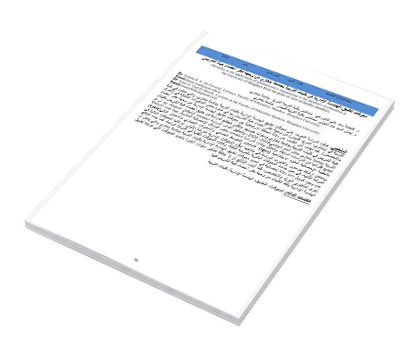Obstacles to the application of administrative engineering in the faculties of education at the University of Benghazi from the point of view of faculty members
DOI:
https://doi.org/10.37376/asj.vi1.1793Keywords:
obstacles, application, administrative engineering, faculties of educationAbstract
The study aimed to identify the obstacles to applying administrative engineering in the colleges of education at the University of Benghazi, which were represented in the College of Education (Benghazi, Marg, Qamines) from the viewpoint of the faculty members in the light of some variables represented in (type, specialization). It also aimed to reveal the significance of the correlation between the obstacles to applying administrative engineering from the viewpoint of faculty members in the colleges of education at the University of Benghazi and their years of experience. The study population consisted of all faculty members at the colleges of education at the University of Benghazi during the academic year 2019-2020. To achieve the study goals, the two researchers used the questionnaire, after their paragraphs were collected from previous studies. To analyze the study data, some appropriate statistical methods were used. The statistical bag of social floats (spss) was used. The mean, standard deviation, T test and Pearson correlation coefficient were used. The study showed in its results that the administrative obstacles came first, then the financial obstacles followed in the second place, while the human obstacles came in the third rank, and the technical obstacles were in the fourth rank, and the results also showed that there were no statistically significant differences in determining the obstacles to applying administrative engineering in the colleges of education At Benghazi University, it can be attributed to the variables of gender and specialization. The results also demonstrated that the variable of years of experience has nothing to do with identifying the obstacles that face the application of administrative engineering to these colleges from the viewpoint of the faculty members.
Downloads

Downloads
Published
How to Cite
Issue
Section
License
Copyright (c) 2022 Almanara Scientific Journal

This work is licensed under a Creative Commons Attribution-NonCommercial-NoDerivatives 4.0 International License.







